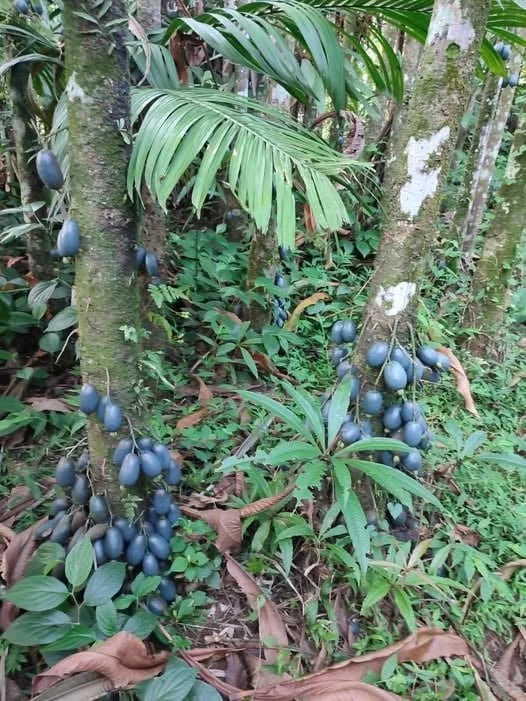 Image 1 of 2
Image 1 of 2

 Image 2 of 2
Image 2 of 2



Barringtonia papuana
Barringtonia papuana is a lesser-known species of the Barringtonia genus, native to Papua New Guinea and parts of the surrounding Australasian region. It is typically found in lowland tropical forests, often near water bodies such as rivers or swamps, where the soil remains moist and nutrient-rich. Like other Barringtonia species, B. papuana is a medium-sized tree, capable of reaching notable heights with a straight trunk and broad, spreading canopy.
This species is appreciated for its ornamental appeal and ecological value. The tree produces elongated, attractive leaves and striking flowers, which are often large, brush-like, and pinkish to reddish in color—typical of many Barringtonia species that rely on bats and moths for pollination. The fruits are usually large and boxy, often with a woody shell that helps them float, an adaptation for dispersal by water (hydrochory).
Though not widely cultivated, Barringtonia papuana has potential for use in reforestation projects, riparian restoration, or as an ornamental species in tropical gardens. Its role in supporting local biodiversity—providing food and habitat for insects, birds, and mammals—adds to its ecological significance.
From my research, I found no evidence to make me think it is edible, still a cool looking species none the less.
Seeds are sold in packs of 1, shipped in vermiculite.
Barringtonia papuana is a lesser-known species of the Barringtonia genus, native to Papua New Guinea and parts of the surrounding Australasian region. It is typically found in lowland tropical forests, often near water bodies such as rivers or swamps, where the soil remains moist and nutrient-rich. Like other Barringtonia species, B. papuana is a medium-sized tree, capable of reaching notable heights with a straight trunk and broad, spreading canopy.
This species is appreciated for its ornamental appeal and ecological value. The tree produces elongated, attractive leaves and striking flowers, which are often large, brush-like, and pinkish to reddish in color—typical of many Barringtonia species that rely on bats and moths for pollination. The fruits are usually large and boxy, often with a woody shell that helps them float, an adaptation for dispersal by water (hydrochory).
Though not widely cultivated, Barringtonia papuana has potential for use in reforestation projects, riparian restoration, or as an ornamental species in tropical gardens. Its role in supporting local biodiversity—providing food and habitat for insects, birds, and mammals—adds to its ecological significance.
From my research, I found no evidence to make me think it is edible, still a cool looking species none the less.
Seeds are sold in packs of 1, shipped in vermiculite.

